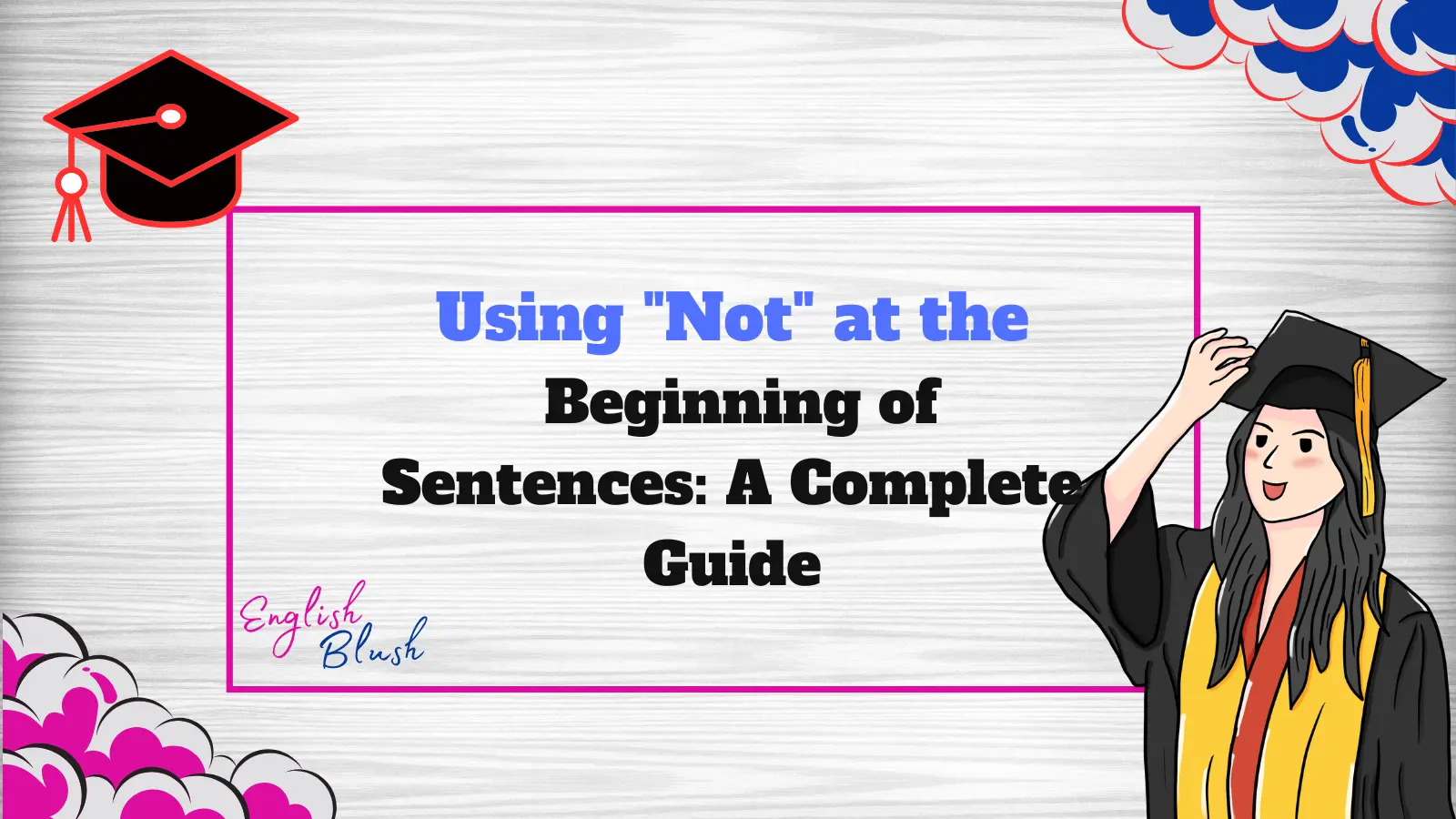Starting a sentence with “not” is a style choice you might encounter in both formal and informal writing. While it may seem unconventional, it’s an effective way to make your message clear and strong. In this article, we’ll break down the rules and tips for using “not” as the first word in a sentence. You’ll learn how to use it in different contexts, see practical examples, and explore some alternatives.
Why Use “Not” at the Start of a Sentence?
Starting a sentence with “not” draws attention to the contrast or negation you’re making. It is often used to emphasize something in a direct and impactful way. This approach works in casual conversations, formal writing, or creative storytelling. Let’s look at the situations where this style makes sense:
- For clarity: It helps highlight what you’re opposing or rejecting.
- For emphasis: The sentence becomes powerful and expressive.
- For variety: It breaks the monotony of similar-sounding sentences.
Rules to Keep in Min
Although starting with “not” can be effective, it’s important to use it correctly. Here are a few rules to consider:
1. Ensure It’s Grammatically Correct
When starting with “not,” the sentence must still follow standard grammar rules. The word “not” should connect logically to the sentence that follows.
2. Match the Context
Starting with “not” works best when it fits the tone of your writing. While it’s fine in informal texts, it might not always suit overly formal documents like research papers.
3. Don’t Overuse It
Overusing “not” can make your writing feel repetitive or overly negative. Use this structure sparingly and only when it enhances your message.
Using “Not” in Informal Writin
In casual writing—like texts, blogs, or social media—you have more freedom to start sentences with “not.” It’s a quick and natural way to express an idea.
Examples:
- Not everyone agrees with that idea, but it’s worth considering.
- Not what I expected, but still a pleasant surprise.
- Not the best way to solve the problem, is it?
Tip: Starting with “not” can make your sentences sound conversational. If that fits your tone, go for it!
Using “Not” in Formal Writing
Formal writing has stricter rules, but starting with “not” is still acceptable in certain cases. Use it to add contrast or clarify your argument without sounding too casual.
Examples:
- Not all solutions address the root cause of the problem.
- Not only does this method save time, but it also increases efficiency.
- Not until recent studies have we understood its full impact.
Tip: To maintain professionalism, combine “not” with a clear, concise message. This avoids the risk of sounding overly negative.
Common Alternatives to Starting With “Not”
Sometimes, you might want to avoid starting with “not” to maintain variety or soften the tone. Here are some alternatives:
1. Use a Positive Frame
Instead of saying what isn’t true, focus on what is true.
- “Not all options are feasible.” → “Some options are not feasible.”
- “Not everyone agrees.” → “There’s disagreement among some.”
2. Use Other Negations
Switch “not” with phrases like “it is not,” “no,” or “nothing.”
- “Not what I wanted.” → “This was not what I wanted.”
- “Not acceptable.” → “No acceptance for this behavior.”
Mixing “Not” With Other Structures
Sometimes, “not” can be paired with phrases like “not only” or “not until” to add sophistication to your writing.
Using “Not Only… But Also”
This structure highlights two points, adding emphasis and balance to the sentence.
Examples:
- Not only was the project completed on time, but it also met all quality standards.
- Not only is she a great writer, but she’s also an amazing speaker.
Using “Not Until”
This phrase shows when something happens or changes.
Examples:
- Not until the storm passed could we safely leave the shelter.
- Not until you try will you understand the difficulty.
Benefits of Starting With “Not”
Here’s why this technique works well when used correctly:
- Improved Clarity: It clearly identifies what isn’t happening or true.
- Emphasis: Makes important points stand out.
- Creative Flow: Adds variety to your sentence structure.
Using “not” keeps your writing flexible and impactful.
When to Avoid Starting With “Not
While effective, starting with “not” isn’t always the best choice. Avoid this approach when:
- It’s Unnecessary: If the message is clear without starting with “not,” skip it.
- It’s Overused: Repeatedly starting with “not” makes the writing sound one-dimensional.
- It’s Too Negative: Constant negation can make your tone feel harsh or critical.
Final Thought
Starting a sentence with “not” isn’t as unusual or complex as it seems. Whether you’re writing an email, a report, or a blog post, this technique helps you emphasize ideas and clarify your message. Just remember to use it appropriately and balance it with other sentence structures for smoother and more engaging writing.





